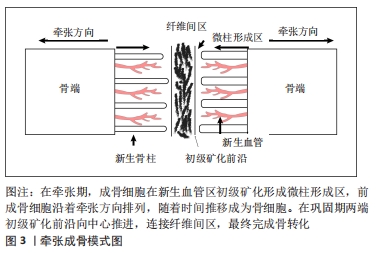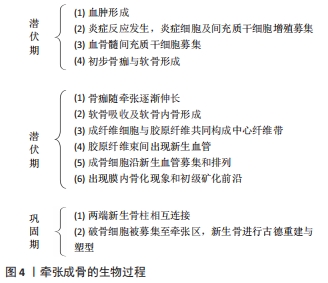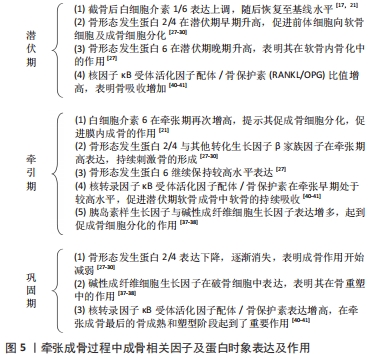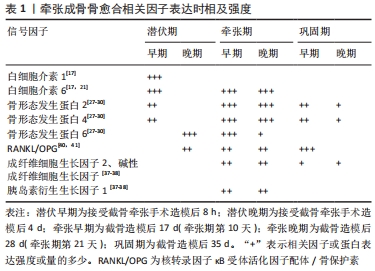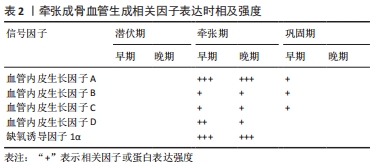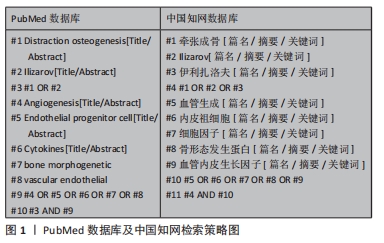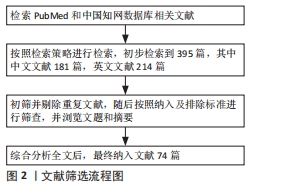[1] YIN P, ZHANG Q, MAO Z, et al. The treatment of infected tibial nonunion by bone transport using the Ilizarov external fixator and a systematic review of infected tibial nonunion treated by Ilizarov methods. Acta Orthop Belg. 2014;80(3):426-435.
[2] ERALP L, BILEN FE, ROZBRUCH SR, et al. External fixation reconstruction of the residual problems of benign bone tumours. Strategies Trauma Limb Reconstr. 2016;11(1):37-49.
[3] ARONSON J. Temporal and spatial increases in blood flow during distraction osteogenesis. Clin Orthop Relat Res. 1994;(301):124-131.
[4] ARONSON J, GOOD B, STEWART C, et al. Preliminary studies of mineralization during distraction osteogenesis. Clin Orthop Relat Res. 1990;(250):43-49.
[5] ARONSON J, HARP JH. Mechanical forces as predictors of healing during tibial lengthening by distraction osteogenesis. Clin Orthop Relat Res. 1994;(301):73-79.
[6] EYRES KS, BELL MJ, KANIS JA. New bone formation during leg lengthening. Evaluated by dual energy X-ray absorptiometry. J Bone Joint Surg Br. 1993;75(1):96-106.
[7] CHOI IH, AHN JH, CHUNG CY, et al. Vascular proliferation and blood supply during distraction osteogenesis: a scanning electron microscopic observation. J Orthop Res. 2000;18(5):698-705.
[8] MEYER U, MEYER T, VOSSHANS J, et al. Decreased expression of osteocalcin and osteonectin in relation to high strains and decreased mineralization in mandibular distraction osteogenesis. J Craniomaxillofac Surg. 1999;27(4):222-227.
[9] MEYER U, MEYER T, WIESMANN HP, et al. The effect of magnitude and frequency of interfragmentary strain on the tissue response to distraction osteogenesis. J Oral Maxillofac Surg. 1999;57(11):1331-1341.
[10] MEYER U, WIESMANN HP, MEYER T, et al. Microstructural investigations of strain-related collagen mineralization. Br J Oral Maxillofac Surg. 2001; 39(5):381-389.
[11] SATO M, YASUI N, NAKASE T, et al. Expression of bone matrix proteins mRNA during distraction osteogenesis. J Bone Miner Res. 1998;13(8): 1221-1231.
[12] YASUI N, SATO M, OCHI T, et al. Three modes of ossification during distraction osteogenesis in the rat. J Bone Joint Surg Br. 1997;79(5): 824-830.
[13] HAMANISHI C, YOSHII T, TOTANI Y, et al. Lengthened callus activated by axial shortening. Histological and cytomorphometrical analysis. Clin Orthop Relat Res. 1994;(307):250-254.
[14] KARP NS, MCCARTHY JG, SCHREIBER JS, et al. Membranous bone lengthening: a serial histological study. Ann Plast Surg. 1992;29(1):2-7.
[15] KARAHARJU EO, AALTO K, KAHRI A, et al. Distraction bone healing. Clin Orthop Relat Res. 1993;(297):38-43.
[16] MCCARTHY JG, STELNICKI EJ, MEHRARA BJ, et al. Distraction osteogenesis of the craniofacial skeleton. Plast Reconstr Surg. 2001; 107(7):1812-1827.
[17] AI-AQL ZS, ALAGL AS, GRAVES DT, et al. Molecular mechanisms controlling bone formation during fracture healing and distraction osteogenesis. J Dent Res. 2008;87(2):107-118.
[18] MIZUTA H, SANYAL A, FUKUMOTO T, et al. The spatiotemporal expression of TGF-beta1 and its receptors during periosteal chondrogenesis in vitro. J Orthop Res. 2002;20(3):562-574.
[19] SIMMONS DJ. Fracture healing perspectives. Clin Orthop Relat Res. 1985;(200):100-113.
[20] JAZRAWI LM, MAJESKA RJ, KLEIN ML, et al. Bone and cartilage formation in an experimental model of distraction osteogenesis. J Orthop Trauma. 1998;12(2):111-116.
[21] CHO TJ, KIM JA, CHUNG CY, et al. Expression and role of interleukin-6 in distraction osteogenesis. Calcif Tissue Int. 2007;80(3):192-200.
[22] VAUHKONEN M, PELTONEN J, KARAHARJU E, et al. Collagen synthesis and mineralization in the early phase of distraction bone healing. Bone Miner. 1990;10(3):171-181.
[23] LAMMENS J, LIU Z, AERSSENS J, et al. Distraction bone healing versus osteotomy healing: a comparative biochemical analysis. J Bone Miner Res. 1998;13(2):279-286.
[24] HOLBEIN O, NEIDLINGER-WILKE C, SUGER G, et al. Ilizarov callus distraction produces systemic bone cell mitogens. J Orthop Res. 1995; 13(4):629-638.
[25] SALAZAR VS, GAMER LW, ROSEN V. BMP signalling in skeletal development, disease and repair. Nat Rev Endocrinol. 2016;12(4):203-221.
[26] SOJO K, SAWAKI Y, HATTORI H, et al. Immunohistochemical study of vascular endothelial growth factor (VEGF) and bone morphogenetic protein-2, -4 (BMP-2, -4) on lengthened rat femurs. J Craniomaxillofac Surg. 2005;33(4):238-245.
[27] SATO M, OCHI T, NAKASE T, et al. Mechanical tension-stress induces expression of bone morphogenetic protein (BMP)-2 and BMP-4, but not BMP-6, BMP-7, and GDF-5 mRNA, during distraction osteogenesis. J Bone Miner Res. 1999;14(7):1084-1095.
[28] RAUCH F, LAUZIER D, CROTEAU S, et al. Temporal and spatial expression of bone morphogenetic protein-2, -4, and -7 during distraction osteogenesis in rabbits. Bone. 2000;27(3):453-459.
[29] FLOERKEMEIER T, THOREY F, WELLMANN M, et al. rhBMP-2 in an injectable Gelfoam carrier enhances consolidation of the distracted callus in a sheep model. Technol Health Care. 2017;25(6):1163-1172.
[30] GITELMAN SE, KOBRIN MS, YE JQ, et al. Recombinant Vgr-1/BMP-6-expressing tumors induce fibrosis and endochondral bone formation in vivo. J Cell Biol. 1994;126(6):1595-1609.
[31] YAZAWA M, KISHI K, NAKAJIMA H, et al. Expression of bone morphogenetic proteins during mandibular distraction osteogenesis in rabbits. J Oral Maxillofac Surg. 2003;61(5):587-592.
[32] CAMPISI P, HAMDY RC, LAUZIER D, et al. Expression of bone morphogenetic proteins during mandibular distraction osteogenesis. Plast Reconstr Surg. 2003;111(1):201-210.
[33] LAMMENS J, LIU Z, LUYTEN F. Bone morphogenetic protein signaling in the murine distraction osteogenesis model. Acta Orthop Belg. 2009; 75(1):94-102.
[34] SAILHAN F, CHOTEL F, CHOUSTA A, et al. Unexpected absence of effect of rhBMP-7 on distraction osteogenesis. Clin Orthop Relat Res. 2007; 457:227-234.
[35] Ren LF, Shi GS, Tong YQ, et al. Effects of rhBMP-2/7 heterodimer and RADA16 hydrogel scaffold on bone formation during rabbit mandibular distraction. J Oral Maxillofac Surg. 2018;76(5):1092.e1-1092.e10.
[36] GIANNOUDIS PV, TZIOUPIS C. Clinical applications of BMP-7: the UK perspective. Injury. 2005;36 Suppl 3:S47-S50.
[37] FARHADIEH RD, DICKINSON R, YU Y, et al. The role of transforming growth factor-beta, insulin-like growth factor I, and basic fibroblast growth factor in distraction osteogenesis of the mandible. J Craniofac Surg. 1999;10(1):80-86.
[38] TAVAKOLI K, YU Y, SHAHIDI S, et al. Expression of growth factors in the mandibular distraction zone: a sheep study. Br J Plast Surg. 1999; 52(6):434-439.
[39] DENG C, WYNSHAW-BORIS A, ZHOU F, et al. Fibroblast growth factor receptor 3 is a negative regulator of bone growth. Cell. 1996;84(6): 911-921.
[40] PÉREZ-SAYÁNS M, SOMOZA-MARTÍN JM, BARROS-ANGUEIRA F, et al. RANK/RANKL/OPG role in distraction osteogenesis. Oral Surg Oral Med Oral Pathol Oral Radiol Endod. 2010;109(5):679-686.
[41] ZHU WQ, WANG X, WANG XX, et al. Temporal and spatial expression of osteoprotegerin and receptor activator of nuclear factor -kappaB ligand during mandibular distraction in rats. J Craniomaxillofac Surg. 2007;35(2):103-111.
[42] NUNTANARANONT T, SUTTAPREYASRI S, VONGVATCHARANON S. Quantitative expression of bone-related cytokines induced by mechanical tension-stress during distraction osteogenesis in a rabbit mandible. J Investig Clin Dent. 2014;5(4):255-265.
[43] KHANAL A, YOSHIOKA I, TOMINAGA K, et al. The BMP signaling and its Smads in mandibular distraction osteogenesis. Oral Dis. 2008;14(4): 347-355.
[44] LI G, VIRDI AS, ASHHURST DE, et al. Tissues formed during distraction osteogenesis in the rabbit are determined by the distraction rate: localization of the cells that express the mRNAs and the distribution of types I and II collagens. Cell Biol Int. 2000;24(1):25-33.
[45] GANEY TM, KLOTCH DW, SASSE J, et al. Basement membrane of blood vessels during distraction osteogenesis. Clin Orthop Relat Res. 1994; (301):132-138.
[46] MORGAN EF, HUSSEIN AI, AL-AWADHI BA, et al. Vascular development during distraction osteogenesis proceeds by sequential intramuscular arteriogenesis followed by intraosteal angiogenesis. Bone. 2012;51(3): 535-545.
[47] BRAGDON B, LYBRAND K, GERSTENFELD L. Overview of biological mechanisms and applications of three murine models of bone repair: closed fracture with intramedullary fixation, distraction osteogenesis, and marrow ablation by reaming. Curr Protoc Mouse Biol. 2015;5(1):21-34.
[48] MATSUBARA H, HOGAN DE, MORGAN EF, et al. Vascular tissues are a primary source of BMP2 expression during bone formation induced by distraction osteogenesis. Bone. 2012;51(1):168-180.
[49] STREET J, WINTER D, WANG JH, et al. Is human fracture hematoma inherently angiogenic? Clin Orthop Relat Res. 2000;(378):224-237.
[50] MARTINO MM, BRIQUEZ PS, RANGA A, et al. Heparin-binding domain of fibrin(ogen) binds growth factors and promotes tissue repair when incorporated within a synthetic matrix. Proc Natl Acad Sci U S A. 2013; 110(12):4563-4568.
[51] MOSESSON MW. Fibrinogen and fibrin structure and functions. J Thromb Haemost. 2005;3(8):1894-1904.
[52] THI MM, SUADICANI SO, SPRAY DC. Fluid flow-induced soluble vascular endothelial growth factor isoforms regulate actin adaptation in osteoblasts. J Biol Chem. 2010;285(40):30931-30941.
[53] THI MM, IACOBAS DA, IACOBAS S, et al. Fluid shear stress upregulates vascular endothelial growth factor gene expression in osteoblasts. Ann N Y Acad Sci. 2007;1117:73-81.
[54] SCHIPANI E, MAES C, CARMELIET G, et al. Regulation of osteogenesis-angiogenesis coupling by HIFs and VEGF. J Bone Miner Res. 2009;24(8): 1347-1353.
[55] JACOBSEN KA, AL-AQL ZS, WAN C, et al. Bone formation during distraction osteogenesis is dependent on both VEGFR1 and VEGFR2 signaling. J Bone Miner Res. 2008;23(5):596-609.
[56] LIU Y, BERENDSEN AD, JIA S, LOTINUN S, et al. Intracellular VEGF regulates the balance between osteoblast and adipocyte differentiation. J Clin Invest. 2012;122(9):3101-3113.
[57] ECKARDT H, BUNDGAARD KG, CHRISTENSEN KS, et al. Effects of locally applied vascular endothelial growth factor (VEGF) and VEGF-inhibitor to the rabbit tibia during distraction osteogenesis. J Orthop Res. 2003; 21(2):335-340.
[58] CARVALHO RS, EINHORN TA, LEHMANN W, et al. The role of angiogenesis in a murine tibial model of distraction osteogenesis. Bone. 2004;34(5):849-861.
[59] CHOI IH, CHUNG CY, CHO TJ, et al. Angiogenesis and mineralization during distraction osteogenesis. J Korean Med Sci. 2002;17(4):435-447.
[60] JACOBSEN KA, AL-AQL ZS, WAN C, et al. Bone formation during distraction osteogenesis is dependent on both VEGFR1 and VEGFR2 signaling. J Bone Miner Res. 2008;23(5):596-609.
[61] PACICCA DM, PATEL N, LEE C, et al. Expression of angiogenic factors during distraction osteogenesis. Bone. 2003;33(6):889-898.
[62] SCHIPANI E, MAES C, CARMELIET G, et al. Regulation of osteogenesis-angiogenesis coupling by HIFs and VEGF. J Bone Miner Res. 2009;24(8): 1347-1353.
[63] RIDDLE RC, KHATRI R, SCHIPANI E, et al. Role of hypoxia-inducible factor-1alpha in angiogenic-osteogenic coupling. J Mol Med (Berl). 2009;87(6):583-590.
[64] WAN C, GILBERT SR, WANG Y, et al. Activation of the hypoxia-inducible factor-1alpha pathway accelerates bone regeneration. Proc Natl Acad Sci U S A. 2008;105(2):686-691.
[65] LEE DY, CHO TJ, KIM JA, et al. Mobilization of endothelial progenitor cells in fracture healing and distraction osteogenesis. Bone. 2008; 42(5):932-941.
[66] Jia Y, Zhu Y, Qiu S, et al. Exosomes secreted by endothelial progenitor cells accelerate bone regeneration during distraction osteogenesis by stimulating angiogenesis. Stem Cell Res Ther. 2019;10(1):12.
[67] LEE DY, CHO TJ, LEE HR, et al. Distraction osteogenesis induces endothelial progenitor cell mobilization without inflammatory response in man. Bone. 2010;46(3):673-679.
[68] SHIRLEY D, MARSH D, JORDAN G, et al. Systemic recruitment of osteoblastic cells in fracture healing. J Orthop Res. 2005;23(5):1013-1021.
[69] ISNER JM, PIECZEK A, SCHAINFELD R, et al. Clinical evidence of angiogenesis after arterial gene transfer of phVEGF165 in patient with ischaemic limb. Lancet. 1996;348(9024):370-374.
[70] LEUNG DW, CACHIANES G, KUANG WJ, et al. Vascular endothelial growth factor is a secreted angiogenic mitogen. Science. 1989;246 (4935):1306-1309.
[71] PUFE T, WILDEMANN B, PETERSEN W, et al. Quantitative measurement of the splice variants 120 and 164 of the angiogenic peptide vascular endothelial growth factor in the time flow of fracture healing: a study in the rat. Cell Tissue Res. 2002;309(3):387-392.
[72] ASAHARA T, TAKAHASHI T, MASUDA H, et al. VEGF contributes to postnatal neovascularization by mobilizing bone marrow-derived endothelial progenitor cells. EMBO J. 1999;18(14):3964-3972.
[73] PAES EC, BITTERMANN GKP, BITTERMANN D, et al. Long-term results of mandibular distraction osteogenesis with a resorbable device in infants with robin sequence: effects on developing molars and mandibular growth. Plast Reconstr Surg. 2016;137(2):375e-385e.
[74] TONOGAI I, TAKAHASHI M, TSUTSUI T, et al. Forearm lengthening by distraction osteogenesis: a report on 5 limbs in 3 cases. J Med Invest. 2015;62(3-4):219-222.
|

